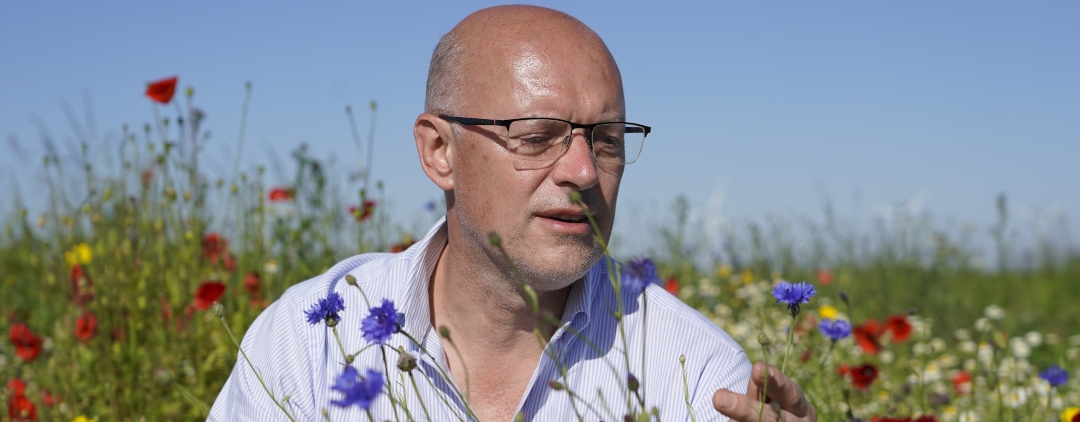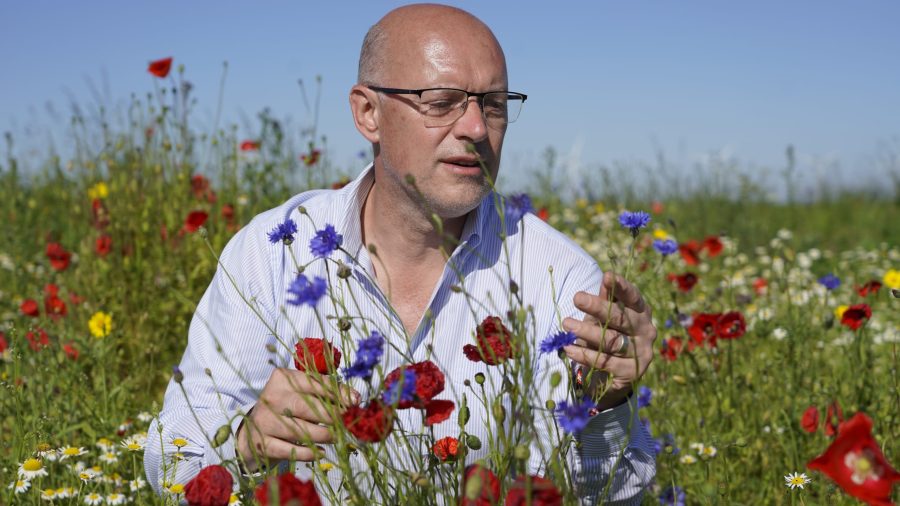
There has been plenty of lip service paid to integrated pest management over the years. CPM looks at what it means and how it’s being put in to practice by farmers in the UK.
Sometimes the best thing you can do environmentally is use a plant protection product.
By Adam Clarke
Integrated pest management (IPM) is integral to sustainable crop production and demonstrating its uptake through data collection is set to become essential as new legislation is introduced.
Through the European Union’s 2009 Sustainable Use of Pesticides Directive (SUD) and each member state’s National Action Plans (NAP), the obligation for farmers to practice IPM has long been enshrined in law.
After the UK left the EU, the SUD was cut and pasted into the UK statute book and the Government has now drafted and consulted on a new NAP that pushes IPM further up the farming agenda than ever before.
But what exactly is IPM and what will the new legislation mean for farmers? Someone well placed to define the system is Voluntary Initiative chairman Phil Jarvis, who until recently managed the Allerton Project in Leicestershire.
The ongoing landscape-scale project has researched the impact of farming practices on wildlife and the environment for more than 20 years, helping to carve a sustainable path forward for UK agriculture.
He says a long-standing definition of IPM is as relevant today as when it was first aired in the 1970s and its remit covers all harmful organisms in crops, including weeds, pests, and diseases.
IPM uses non-chemical or cultural methods to prevent or suppress a problem developing, then monitoring and the application of economic thresholds dictates when further interventions should be made.
Phil says these can be physical like cultivations, biological like introducing natural pest predators or chemical input with a plant protection product, all with the aim of minimising economic damage to the crop.
This all broadly aligns with the definition of IPM in the draft NAP (see chart). However, it seems to give much less weight to plant protection products at the tip of the pyramid than other elements. This isn’t always the way IPM works in practice, says Phil.
“Sometimes the best thing you can do environmentally is use a plant protection product, rather than cultivating several times to kill weeds, so there is a debate to be had in certain situations.”
BASF’s head of technical management Rob Gladwin says this is one area where the company disagrees with the NAP’s hierarchal definition of IPM, pointing out that all elements should be considered equal.
This is perfectly illustrated by the Linking Environment and Farming (LEAF) IPM diagram, which is circular.
“Also key in any successful IPM strategy is to ensure that any farming activity delivers economically, which is not yet addressed within the draft NAP,” he adds.
Yorkshire farmer and agronomist Richard Hinchliffe runs the 560ha family business near Goole, alongside his father and uncle.
He says he tries to follow IPM principles in every agronomic decision he makes, and a shining example has been the farm’s approach to its herbicide resistant blackgrass problem.
Richard completed a Nuffield Scholarship on managing resistant weeds and this inspired a renewed focus on soil health and drainage, with the farm transitioning to no-till in 2012.
The low disturbance system – using a John Deere 750A – reduces grassweeds germinating in his crops, while improved soils and higher seed rates helps increase in-crop weed suppression.
A full residual herbicide programme is core to the farm’s integrated strategy and later in the season, hand rogueing and spot spraying with glyphosate takes out any survivors, preventing seed return.
More recently, Richard has been reviewing the farm’s insecticide use, which has been inspired by the 20-year research partnership with BASF at the farm’s 140ha Rawcliffe Bridge site.
Part of the project has been monitoring biodiversity, which confirmed a surprising abundance of pollinators, beneficial insects, and aquatic organisms within such a highly productive arable landscape.
Once this picture was built, Richard set the goal of minimising or eliminating autumn insecticide sprays to control pests like aphids in cereals and cabbage stem flea beetle in oilseed rape crops.
More intense monitoring of crops and strict application of economic treatment thresholds were the vehicles and for the first time in many years, the farm applied no autumn insecticide in 2020 and, at the time of writing, none in 2021.
“That is something we are very proud of. Hopefully, nature will continue to find its balance and there will be less need to spray in the future.
“No one wants to reach for a can straight away, only when you’ve exhausted all other options. It is also a cost advantage for farmers to do that in most cases.”
Richard adds that in his experience farmers don’t necessarily think they are major IPM practitioners, but a significant number use IPM principles on a day-to-day basis up and down the country.
This could be as simple as selecting a new variety off the AHDB Recommended List with a greater yellow rust resistance score or walking the crop on the lookout for pests or disease.
“The things you don’t do – like making a decision not to spray after walking a crop – are often more important than the things you actually do and enter into Gatekeeper.
“The problem is that we don’t record that side of IPM and it’s something we need to get better at to help showcase what we do,” he explains.
BASF’s agricultural sustainability manager Mike Green agrees, and it is why the company is working to develop an IPM recording app for farmers.
Set for beta testing in 2022, it will assign a positive, negative, or neutral IPM and climate score for every decision or input in the crop production process.
It compiles data from existing crop management software and any manual entries in the field. It will provide a baseline of a farm’s IPM and climate efficient practices and allow it to make improvements.
Mike says it will help growers demonstrate they are farming sustainably, which is likely to be integral to receiving payments as the UK’s new farm support framework takes shape.
It will also influence future farm policy and help maintain availability of plant protection products by demonstrating responsible use in the field.
“The widely supported easyconnect closed transfer system is good for the industry as a whole and that’s why we funded its development and shared its value with others.
“Similarly, the app will help show the Government we are all serious about putting IPM into practice.”
The company’s public affairs manager Jon Williams adds that public perception is also a crucial driver, and this will enable industry to show they are on a sustainable path forward.
“We need to make sure they see what we are doing, and the industry is being seen in a positive light, as it should be.
“Farmers are doing great work with all the modern tools available, producing safe and affordable food in a way that is sensitive to the environment.”
Project Fortress puts new IPM techniques into practice
BASF is working on a new project with Northants growers William and Andrew Pitts which hopes to show how fresh thinking on IPM might fit into commercial arable situations.
The company has been working in partnership at The Grange Farm near Mears Ashby since 2009, conducting conventional trials and monitoring biodiversity and sustainability metrics across its 700ha of chalky boulder clay soils.
BASF’s sustainability manager Mike Green says a passion of both farmers is Grey Partridge conservation and has seen the farm review its crop rotation, reduce insecticide use and establish more wildflower and winter bird food strips over the past eight years.
These have also helped by providing breeding sites and promoted insect populations that are key to healthy adult bird numbers and keeping young partridge chicks alive.
“The farm has also established turning headlands at the ends of some fields, planting a multispecies seed mix which has pollinator value above ground and carbon and soil health benefits below ground.
“This encourages as many beneficial insect species as possible and gives the sprayer a straight edge to work from for more accurate use of plant protection products. It’s all part of the IPM mix.”
In a further evolution of its work at Grange Farm, Project Fortress will investigate how newly dubbed ‘agrofloristry’ can might help take IPM systems to the next level.
Core to the new trials are several 8m strips designed and established by William across the project’s 12ha plot area this autumn, which comprise a central undisturbed grass strip, flanked by pollinator habitat on either side. These are designed to give insects “all they could need in an arable field situation”.
Spliced in between the 8m agrofloristry strips are four treatments, including a four-year herbal ley, a one-year supercharger cover crop, a two-year supercharger cover crop and a climate efficient crop rotation of wheat-OSR-wheat-wheat-peas/beans.
The project will now run through a five-year rotation to see how key metrics – such as soil health, insect numbers and crop yields – are affected and how the system might be scaled up.
“They are all IPM and climate efficient activities, so could draw in future Government grants or be sold to offset carbon. You may just do it for yourself to reduce insecticide use and increase biodiversity,” says Mike.




